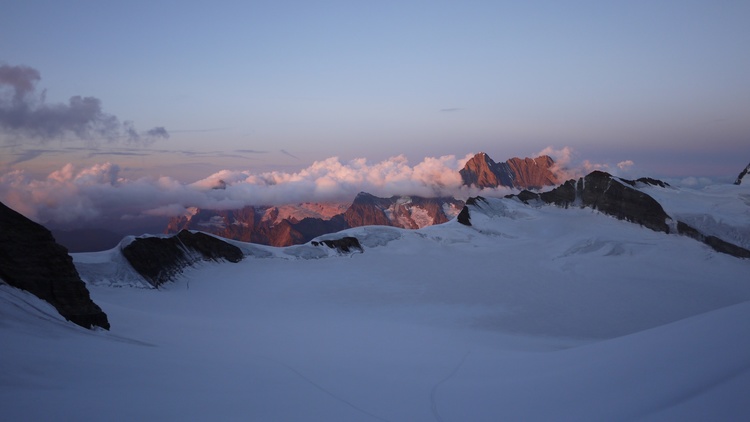Cold in the west is a concept largely limited to adjusting the dial on a thermostat or adding clothes. Cold in November in the Himalaya is not an abstract concept but an ever-present elemental condition that becomes a part of planning everything from the aspect of the room you choose in the lodge (sun exposure), the table you choose in the common room (sun exposure), the clothes you wear when you start to trek and the clothes you take in your day bag in order to change when the wind and weather conditions change, what clothes you have immediately to hand in your room for middle-of-the-night-toilet runs… You get the picture.
Cold up to about 3,000 meters is something to take account of. Cold above 4000 and especially 5000 meters is serious business. You have to keep warm at these altitudes because the body requires vastly more energy to keep your systems running; the body is simply not designed for life with such low oxygen levels. With careful acclimatisation your body can adjust - but not without a price in lots of extra work just to keep your 'lights running and the power on.'
If you've kept up with the blog you'll know I made the mistake on the trek up from Namche Bazar (only 3,400 meters) to ignore the fact that the wind had risen and I was a bit chill. I assumed that the fact that the sun was shining meant I could just wait another 20 minutes before putting on a windproof since the wind might drop and it was a bit of a bother to stop to shift clothing. Unfortunately, that was a mistake and I caught a cold, and while it has gotten better my stamina is not 100%, probably 75%, and this means that some of the high-passes (over 5,500 meters) that I wanted to traverse could only be done at great strain and it just wouldn’t be enjoyable. The truth is: I don’t mind, everything is mind-bogglingly beautiful; you could just come with no itinerary and wander and you'd have a wonderful experience.
And, candidly, I’m lucky: every place I stop for the night at least one and sometimes multiple people are medically evacuated by helicopter for medical treatment and ever year some die; at least one while I have been on this trek from what I heard the other day. I have run across many trekkers that tried to short-circuit their acclimatisation schedules or have started to feel poorly and pushed on instead of stopping for the night and have had to go down, crushed that their trip has been ruined; those on group tours feel even worse as they often must leave friends behind and feel as if they’re “letting the side down.” This is a wildly beautiful and majestic place but it is extremely harsh and you have to know your limits and respect what your body is telling you: when you start to get cold, don’t wait: do what you have to do to get warm, right away.


